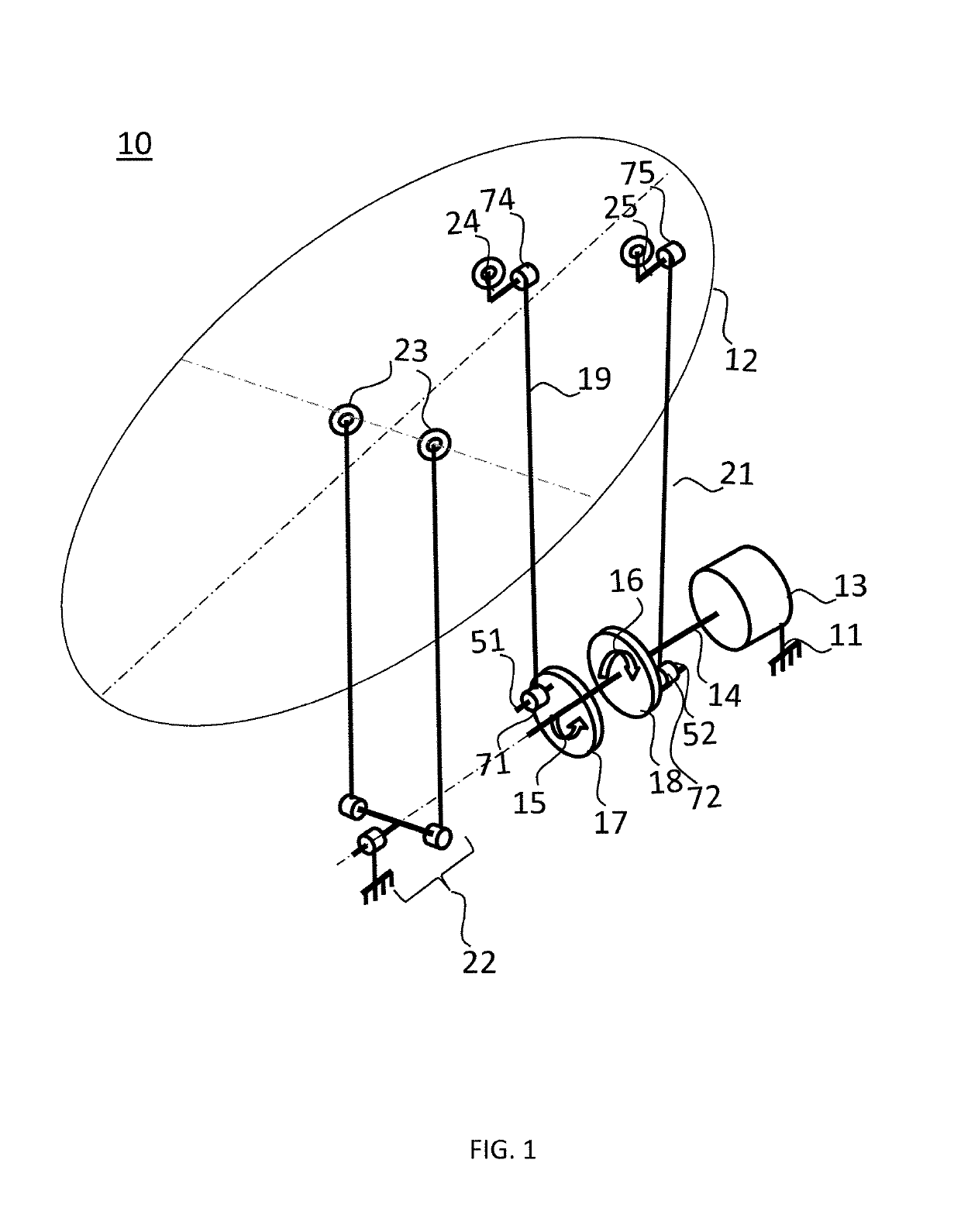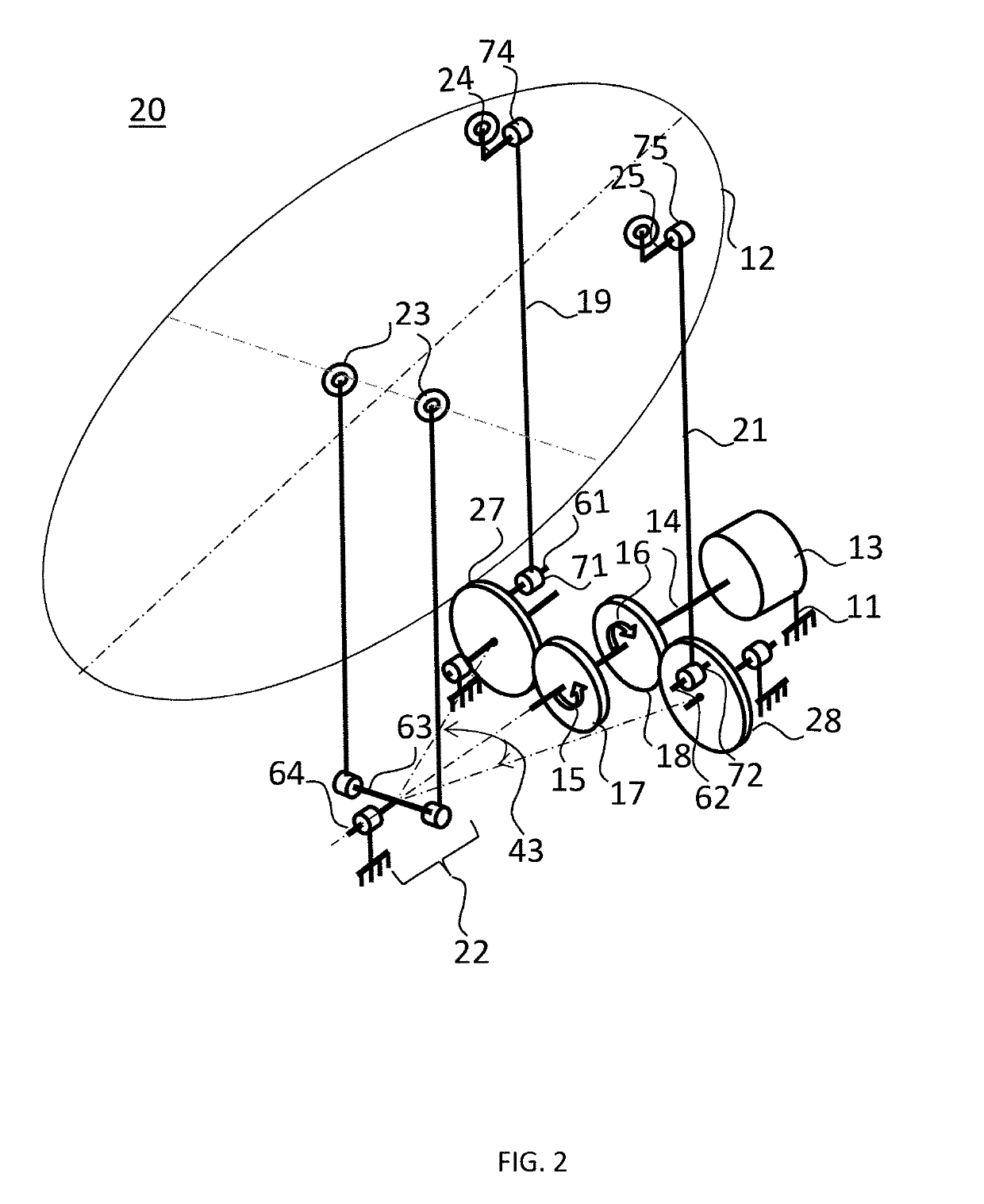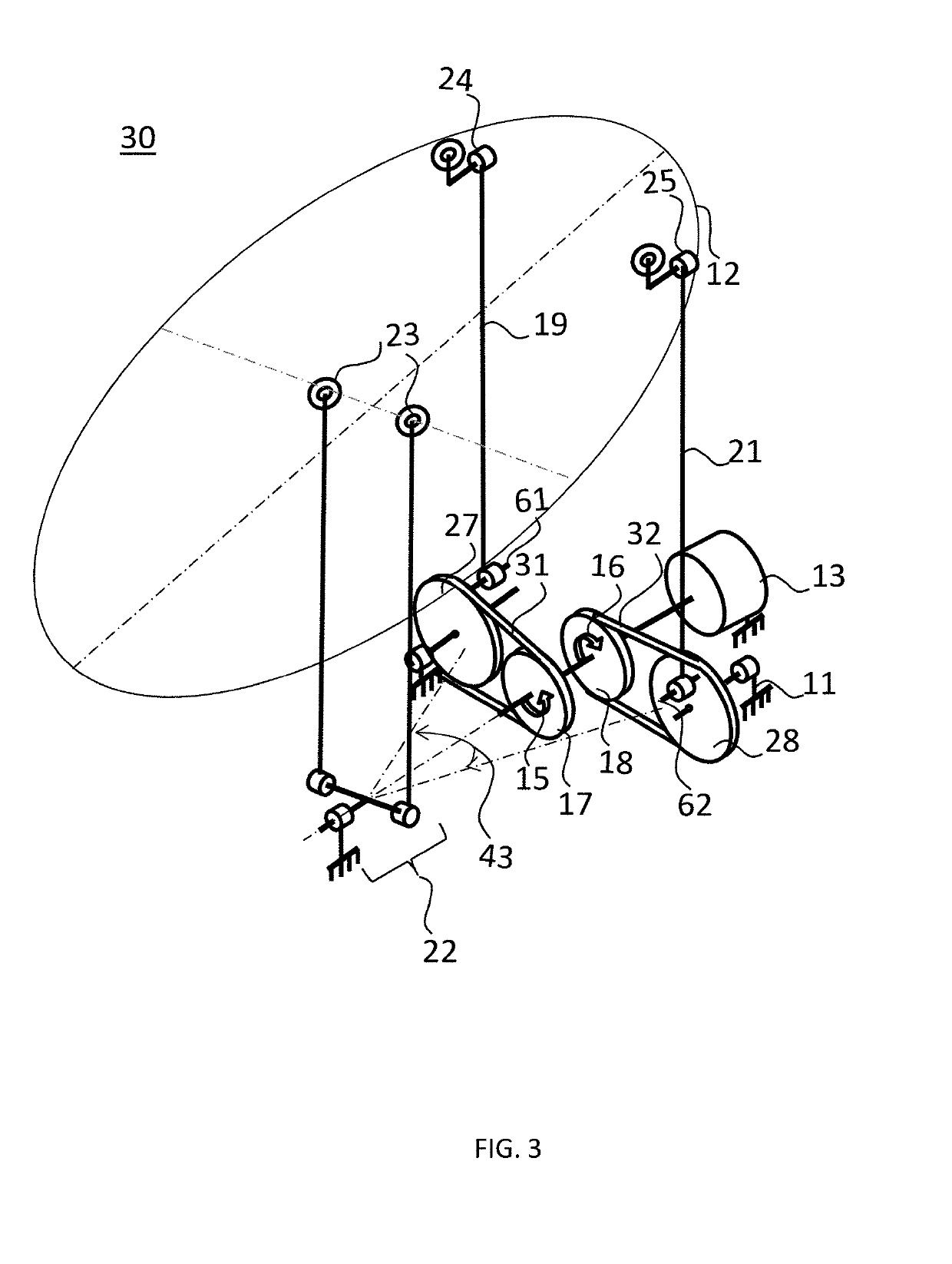Positioning device
a technology of positioning device and motor control circuit board, which is applied in the direction of instruments, machine supports, gearing, etc., can solve the problems of increased weight and cost, and increased weight and cost of two motors, so as to reduce the number of motor control circuit boards, reduce the number of mechanisms used, and increase competitiveness and weight
- Summary
- Abstract
- Description
- Claims
- Application Information
AI Technical Summary
Benefits of technology
Problems solved by technology
Method used
Image
Examples
Embodiment Construction
[0030]In the description of the present application, the invention is described within the scope of a space application. As mentioned above, the invention is applicable to any other technical sector which requires the use of a positioning device of any instrument. The invention also applies to the implementation of a relative movement of an object with regard to another object, for example the opening and closing of a shroud.
[0031]FIG. 1 shows a first embodiment of a pointing device 10 of the pointing assembly according to the invention. The pointing device 10 is designed to position and orientate an instrument in a predetermined direction. Within the context of a space application, the instrument is positioned on a plate 12 and may, for example, be an antenna which is desired to be pointed toward a specific location on the surface of the earth, or a reflector. The invention further relates to the opening and closing of a part such as a shroud, in which case the plate 12 which may b...
PUM
 Login to View More
Login to View More Abstract
Description
Claims
Application Information
 Login to View More
Login to View More - R&D
- Intellectual Property
- Life Sciences
- Materials
- Tech Scout
- Unparalleled Data Quality
- Higher Quality Content
- 60% Fewer Hallucinations
Browse by: Latest US Patents, China's latest patents, Technical Efficacy Thesaurus, Application Domain, Technology Topic, Popular Technical Reports.
© 2025 PatSnap. All rights reserved.Legal|Privacy policy|Modern Slavery Act Transparency Statement|Sitemap|About US| Contact US: help@patsnap.com



